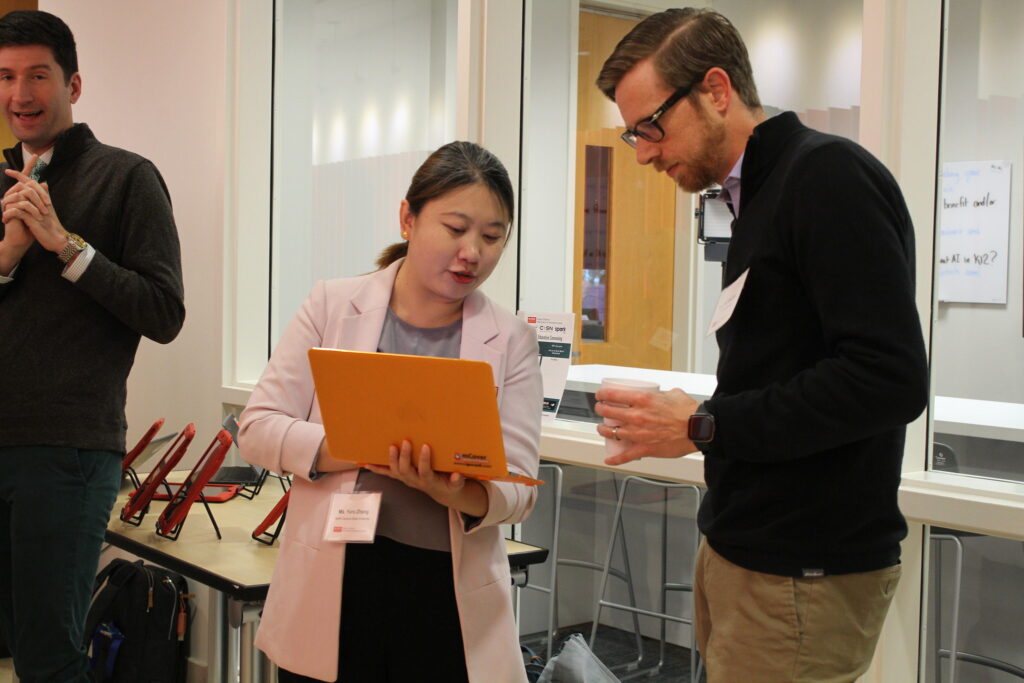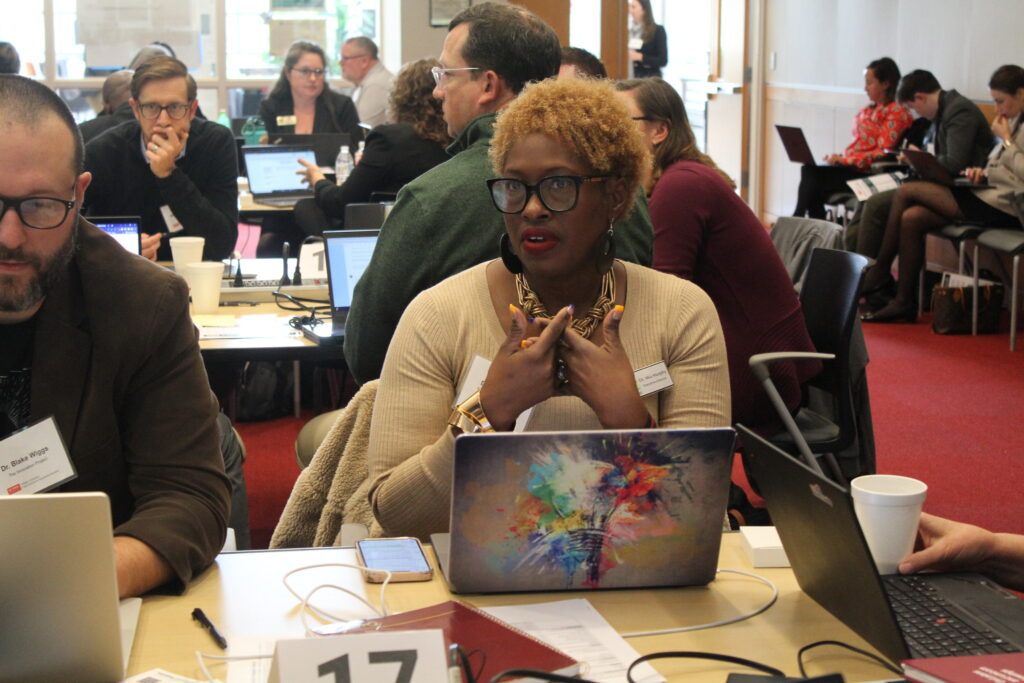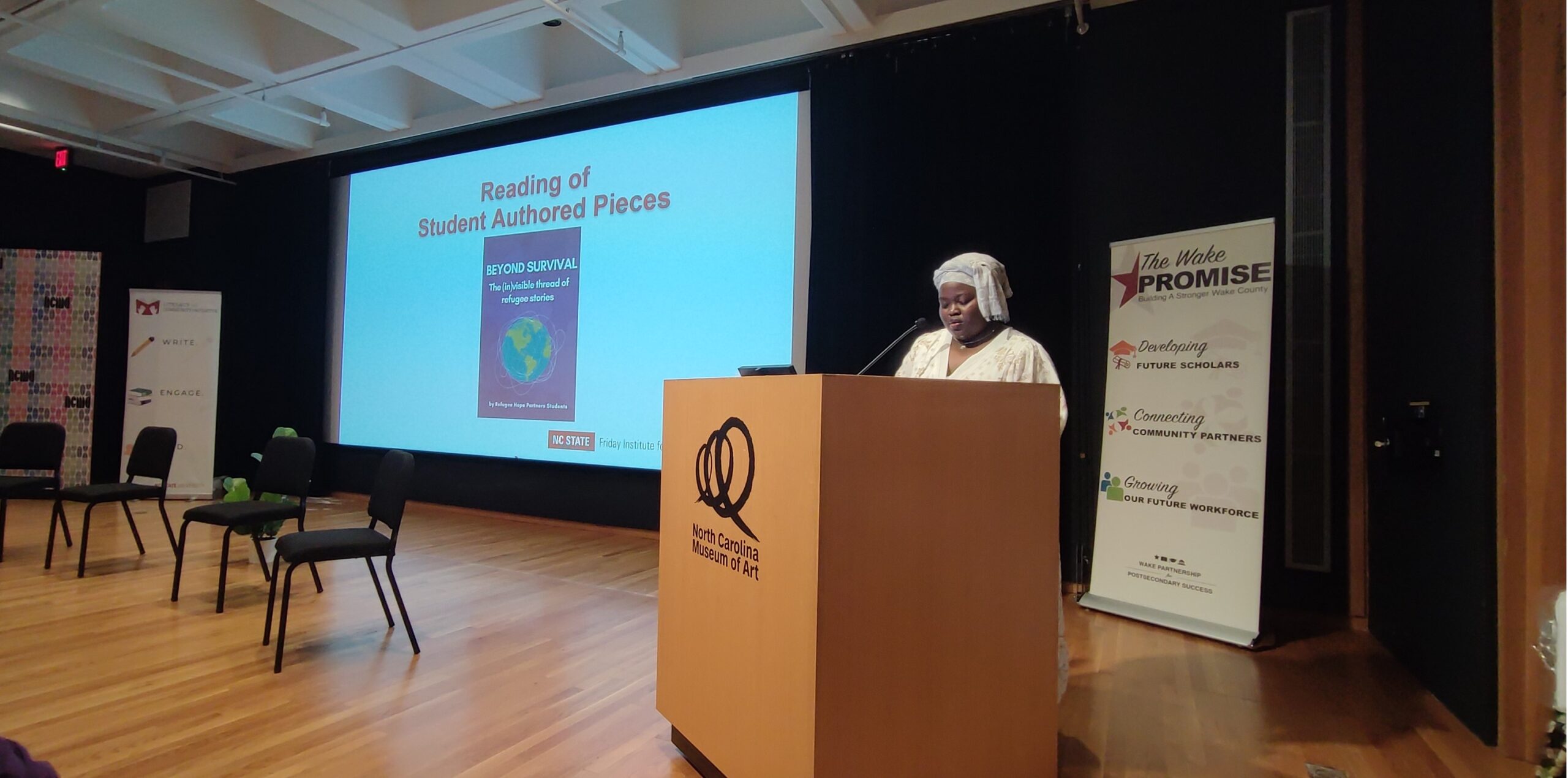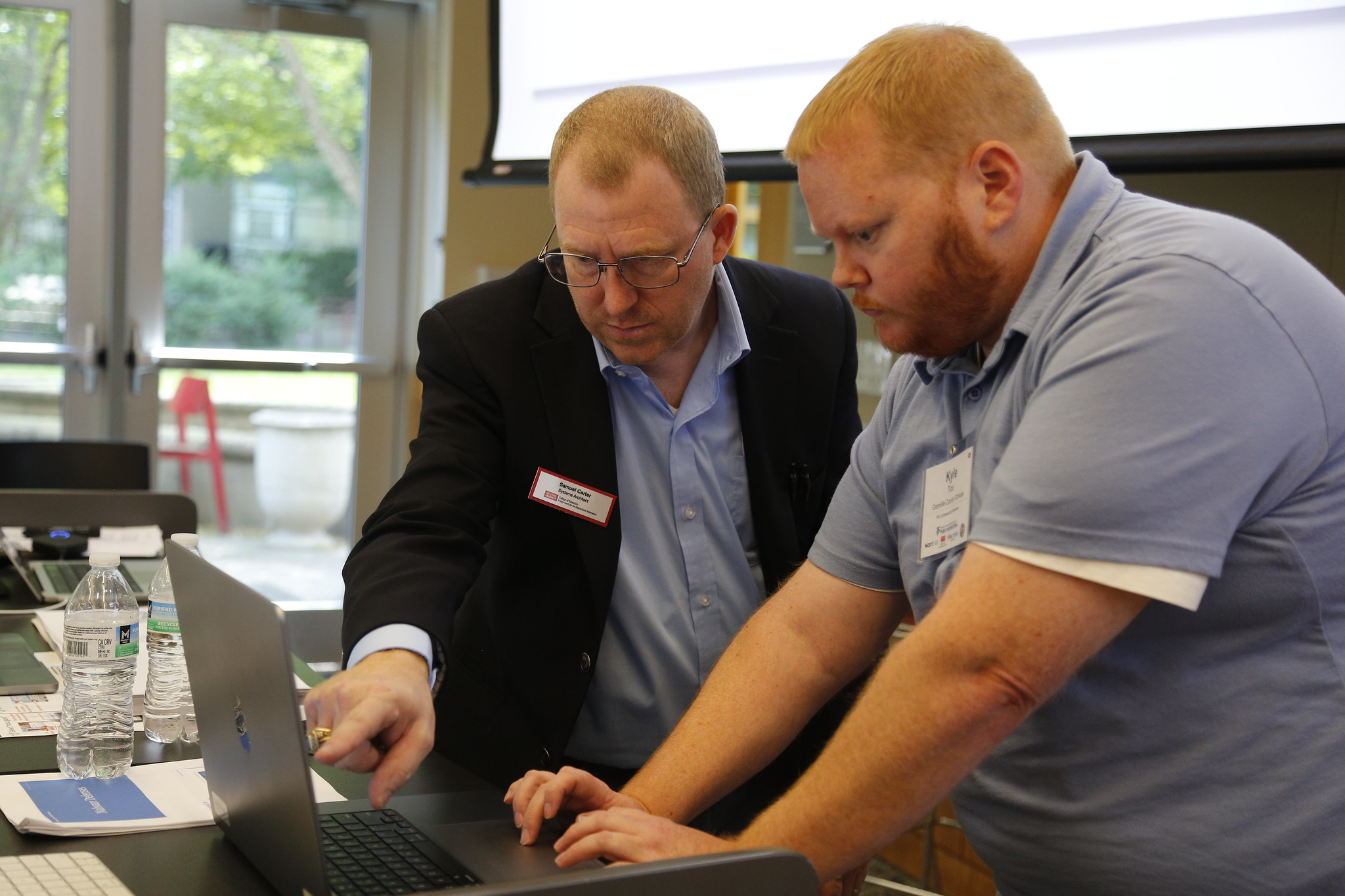By the end of this school year, nearly four in 10 teachers expect to use artificial intelligence (AI) in their classrooms, but only about 20% feel prepared to use those tools. To address AI integration in classes, schools and districts, the Friday Institute for Educational Innovation hosted an AI in K-12 Convening of key stakeholders Nov. 15 to empower educators, address ethical considerations of AI, collaborate with state leaders on the critical guidelines and guardrails for responsible AI integration and ensure equitable access to AI-enhanced learning.
“The potential of AI to tailor educational experiences, streamline administrative processes and refine research investigations substantially impacts educational approaches and outcomes,” said Krista Glazewski, executive director of the Friday Institute and associate dean for translational research in the NC State College of Education. “This aligns seamlessly with the Friday Institute’s commitment as a leader in North Carolina for convening stakeholders to explore critical frontier technologies and their potential to foster student problem-solving abilities and collaborative exploration.”
The convening was hosted in partnership with SparkNC, the EngageAI Institute and The Consortium for School Networking (COSN). During the event, attendees heard from keynote speakers Pati Ruiz, a senior learning sciences and emerging technologies researcher at Digital Promise and James Lester, Goodnight Distinguished University Professor in Artificial Intelligence and Machine Learning at NC State University and the director of the National Science Foundation’s AI Institute for Engaged Learning.

“We’re at an inflection point,” said Lester during his keynote speech. “We have arrived at this moment in human history where things are gonna be changing really quickly…it is really going to be consequential that we make wise decisions at this point, and I don’t just mean us as educators, I mean us as citizens. But also the opportunity to effect change at scales that we just sort of couldn’t have imagined before, and in sort of the depth that we couldn’t have imagined before, is now before us.”
These changes could be concerning for educators, which was addressed several times during the convening. For some, they are afraid that AI will replace the work of teachers. During her keynote speech, Ruiz allayed those fears, saying to think of AI as a tool like a bicycle, not a replacement.
“We see AI more like an electric bicycle,” said Ruiz. “The human is still in control, right? The human is navigating. You’re just getting technical support in propulsion.”
Ruiz addresses these fears in her work to educate students and teachers through AI literacy. AI literacy is the knowledge, skills and attitudes associated with how AI works and how to use it. It can equip individuals in engaging productively and responsibly with AI technologies.
AI in K-12 Education

AI is the way in which a program, technology or a system can sense, reason, act and adapt. This technology has existed in education since the 1970s, from the military’s adaptive testing and intelligent tutoring systems in the 80s to multimodal learning analytics more in the recent decades. Two of the AI-driven applications typically used in schools include generative AI and predictive AI. Generative AI can create text, code, images and other content that can serve as a resource for learning. Predictive AI analyzes patterns in student data to forecast outcomes and allow educators to intervene if needed.
There are several benefits of AI for both students and teachers including personalized learning, access to a high-quality education, efficiency, productivity and engaging learning experiences. For students, AI-driven tools can be a scaffold that increases access to ideas and gets kids excited about learning. For educators, AI can assist with workloads by automating targeted tasks, helping create interactive, innovative learning materials that are responsive to the needs of the students and increasing feedback loops.
“It can be such a catalyst for teachers,” said Allison Reid, senior director for digital learning and libraries for the Wake County Public School System. “There are very few things that I’ve come across in my career that actually give time back to teachers and staff. This is one of those things. This can cut out those mundane, repetitive tasks and allow teachers the ability to really sit with students one-on-one, to really invest in the human relationships that can never be replaced with technology.”
AI and Equity

The equity of AI and who has access to it was another issue addressed during the convening. If districts decide to ban AI in their schools, said Ruiz, then students who don’t have access to these tools at home will be left behind. This will not only deny opportunities to all students but also diminish the educated workforce equipped and trained to work with AI tools in the future, which is a growing field.
“As state and district education leaders, our engagement in the AI conversation is vital for shaping a future where technology enhances learning for every student,” said Emma Braaten, director of digital learning at the Friday Institute and lead organizer of the convening. “Our role in policy-making, research-based resource development and community engagement ensures that the integration of AI in schools is not only innovative but also equitable and aligned with long-term educational goals.”
According to AI4ALL, when AI is more inclusive, it is a more accurate representation of the world around us, and it’s likely to be more innovative, ethical and able to solve new problems.
“I think AI has the potential to advance equity in ways that we haven’t been able to up to now,” said Kimberly Jones, an English teacher at Chapel Hill High School and the 2023 Burroughs Wellcome Fund North Carolina Teacher of the Year. “I think it can be an equalizer. We know that brick and mortar hard resources are limited, and they’re tied to things like local tax base or local partnerships that just don’t exist in every corner of our state. Expanding our access to AI equips the kids with that opportunity to discover these talents that they have and are capable of; they just haven’t had the chance to use them.”
AI Guidelines
As AI is adopted into classrooms, there will need to be guidelines, roadmaps and best practices for educators in place. These issues were discussed in the Agreements, Use and Policy Panel during the convening.
“AI is going to change our world in the same amazing ways we can’t imagine,” said panelist Charlotte Dungan, director of content development for TeachAI at Code.org. “We have to be agile and adapt quickly…We need to have those protections in place.”
Other panelists discussed data privacy concerns and several other resources available for educators, including the White House’s AI Bill of Rights, TeachAI’s AI Guidance for Schools Toolkit and AI for Education’s AI Adoption Roadmap for Education Institutions, which focuses on how to establish a strong foundation in developing an AI policy, developing staff and updating educational materials; train students and the larger school community; and continuously review an implementation plan.
While there is still much to figure out, educators left hopeful and optimistic about the future of AI in education.
“The biggest takeaway from today is that we’re all in this together,” said Jacob French, director of digital teaching and learning for Hoke County Schools. “There’s nobody who is significantly ahead of the curve in the adoption process or knowing how to solve problems or knowing how to get school boards on board if they’re not or winning families over if they’re not won over already. We all have the same problems. We’re working through them together.”
To learn more about artificial intelligence at the Friday Institute, visit our website here.
AI Resources for Educators
- MIT Raise
- AI for All
- AI Guidance for Schools Toolkit
- AI Adoption Roadmap
- EngageAI Institute
- COSN’s K-12 Generative AI Readiness Checklist
- AI with the FI Webinar Series
- Blueprint for an AI Bill of Rights



